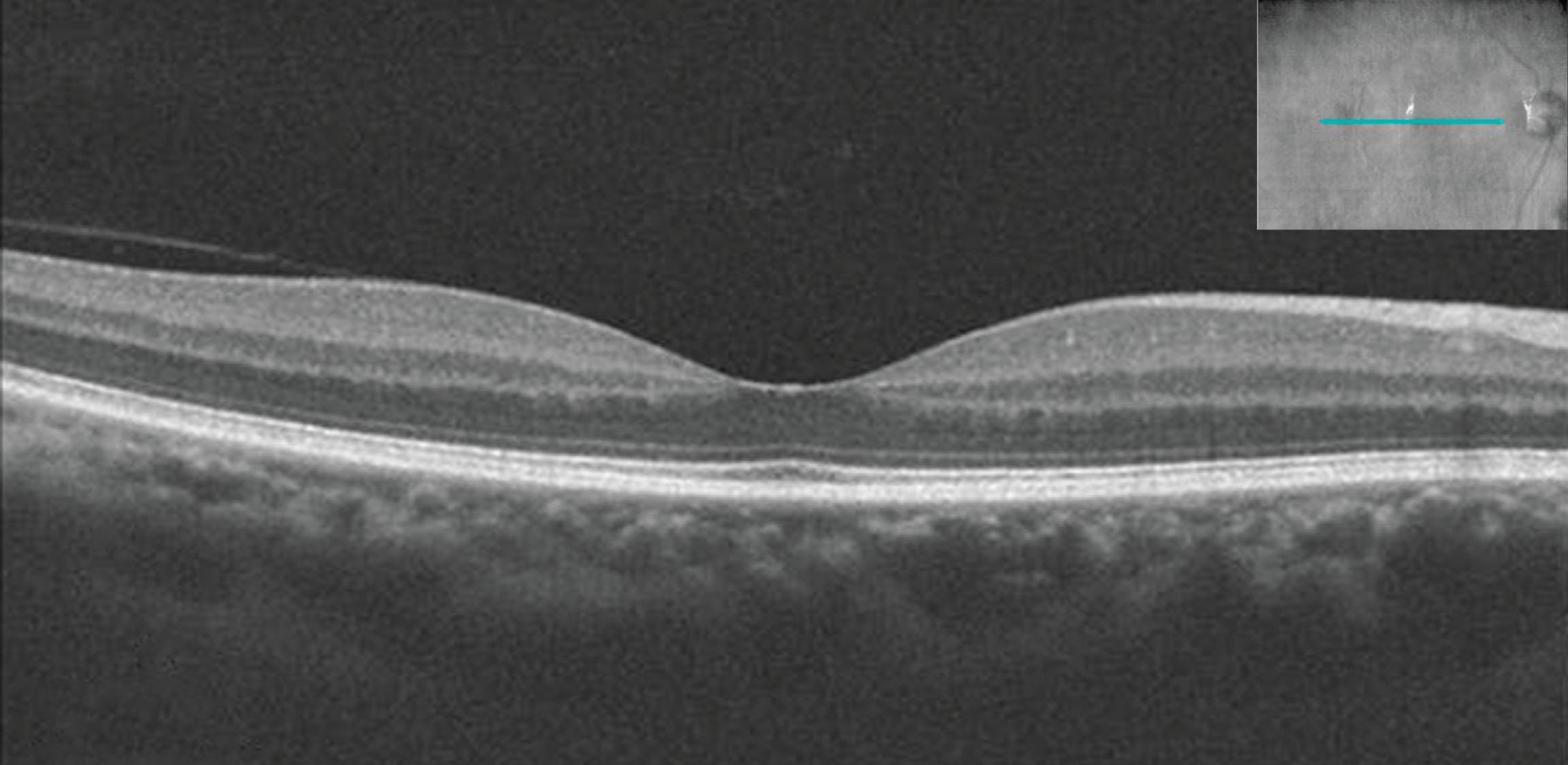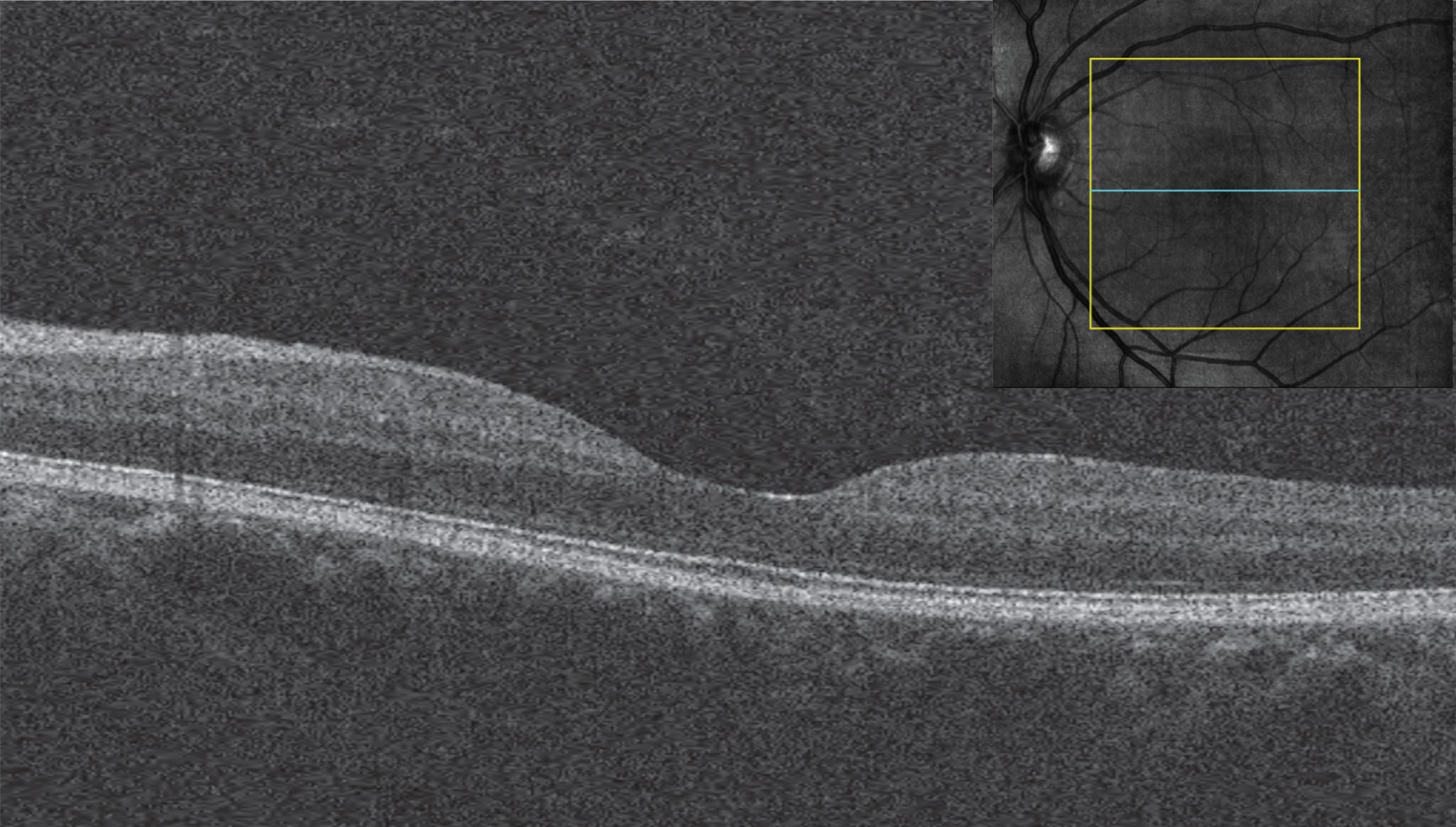Physical Address
304 North Cardinal St.
Dorchester Center, MA 02124
Each commercially available OCT device uses unique scan patterns that are programmed into the machine. There is considerable overlap between devices, however, with several general scan patterns available across all devices. The scan patterns for the major commercially available machines are summarized in Table 1.2.1 . The two most commonly used scans in evaluating retinal disease are:
Macular cube scan
Line scan(s)
| Zeiss Cirrus | Heidelberg Spectralis | Optovue RT-Vue | Topcon 3-D OCT Maestro | Canon Xephilio OCT-A1 | Nidek OCT RS-3000 | Bioptogen SD-OCT | |
|---|---|---|---|---|---|---|---|
| 3D scans | Macular cube | Volume scan | 3D Retina 3D Widefield | 3D Macula |
|
Macula map |
|
| Line scans |
|
7-line raster scan |
|
Line 5-Line Cross | Cross |
|
Linear scan |
| Radial scans | Radial | No presets, can be selected | Radial Lines | Radial | Macula radial | Radial volume | |
| Mesh scan | None | Grid | Macula multi |
Depending on the particular machine, scan patterns may be programmable with respect to functions such as pixel density, B-scan density, speed, ability to oversample, and length of scanned image.
Cube scans are volume or 3D scans analogous to computed tomography or magnetic resonance scans that acquire volumetric cubes of data. SD-OCT machines acquire a rapid series of line scans (B-scans), typically in a 6 mm × 6 mm square area centered on the fovea. The scans are generally at relatively low resolution to minimize the time of scanning. As a result, when examining individual line scans from a cube scan, some detail is lost. As a default, the cube scan is centered at the fovea, but other areas of interest can be captured by manually centering the scan elsewhere in the retina. Optic nerve topographic scans are cube scans centered on the nerve. Cube scans are generally used to generate 3D viewing of the OCT.
In the Zeiss Cirrus SD-OCT, there are two macular cube scans available, both capturing a 6 mm × 6 mm area, with no ability to customize. There is a faster 200 × 200 cube (200 B-scans each composed of 200 A-scans) or the slightly slower 512 × 128 cube (128 B-scans each composed of 512 A-scans) that has higher quality horizontal scans. The volume scan on the Heidelberg Spectralis uses a similar raster scanning protocol with a fast 25 B-scans each consisting of 512 sample points or A-scans or with a dense 1024 × 49 default scanning protocol. The Topcon 3D-OCT offers a 256 × 256 or 512 × 128 scanning protocol. The Optovue RT-Vue 3D Retina scan protocol yields a 74 mm × 7 mm macular cube scan with 141 B-scans consisting of 385 A-scans each.
Raster Scans: raster scanning is one method used to obtain cube scans of the macula. This involves a systematic pattern of image capture over a rectangular area using closely spaced parallel lines. It leads to a uniform sampling density over the entire area being scanned with the OCT.
Radial Scans: these consist of 6 to 18 high-resolution line scans taken at radial orientations, all passing through the fovea. The Optovue RT-Vue's radial scan pattern consists of 18 lines radially oriented to the fovea, which can be adjusted to be between 2 and 12 mm in length. The Heidelberg Spectralis has a 6-line macular radial scan and the Topcon 3D-OCT Maestro has a 12-line radial scan. A disadvantage of the radial line scans is that the machine interpolates between the scans when generating macular thickness maps. This is reasonable for the fovea where the lines are close to each other, but it can miss lesions further out in the macula where the lines are spaced further apart.
Mesh Scans: Some machines include a mesh or grid scanning pattern that acquires vertical and horizontal B-scans over the area of interest. The grid protocol of the RT-Vue consists of five vertical lines and five horizontal lines, and the total pattern can be adjusted to be between 2 and 12 mm in length and 0–8 mm wide.
Line scans are a single B-scan composed of generally a higher number of A-scans than the cube scans. This higher sampling density allows higher-resolution scans of the retinal tissue to be acquired. In addition, oversampling can be performed to increase signal-noise ratio ( Fig. 1.2.1 ). The Cirrus five-line raster consists of five horizontal 3, 6, or 9-mm lines each scanned four times and averaged. The 5 lines in the raster can be collapsed to obtain a single line scan that consists of 20 averaged B-scans ( Fig. 1.2.2 ). The RT-Vue raster scan consists of 21 parallel line scans that can be adjusted to be between 6 and 12 mm in length and 1–8 mm wide. The seven-line raster of the Heidelberg also spans a 6 mm × 6 mm area of the macula. Heidelberg can be programmed to oversample a line scan up to 100 times at each point.


Become a Clinical Tree membership for Full access and enjoy Unlimited articles
If you are a member. Log in here